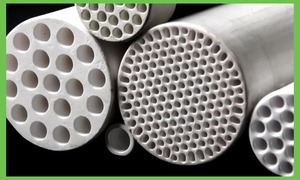-
 Find in Members
Find in Members Find in Videos
Find in Videos Find in Channels
Find in Channels
This website uses cookies to ensure you get the best experience on our website.
To learn more about our privacy policy Click herePrivacy Preference
-
- Last updated Jun 19 0 comments, 36 views, 0 likes
More from Try Plain Jane
More in Politics
Related Blogs
Archives
Key Steps in Operating and Maintaining Ceramic Filter Membranes
Body
Ceramic filter membranes offer reliable removal of particles, pathogens, and turbidity from water. Their rigid structure and uniform pore sizes give consistent performance under varied conditions. This guide explains how ceramic membranes are made, how they work, and what it takes to operate and maintain them effectively.
Membrane Composition and Pore Structure
Ceramic membranes are typically manufactured from alumina, zirconia, or silicon carbide. Production involves forming a multi-layer disc or tube with a coarse support layer beneath a fine separation layer. Pore sizes range from 0.1 to 5 microns. The gradient design prevents rapid blockage by larger particles while maintaining flow through the finer top layer. Discover the power of ceramic membrane filtration – visit our website for innovative water purification solutions today!
Filtration Mechanism
Water is forced through the membrane under low pressure. Suspended solids larger than the pore size are retained on the upstream side. Smaller particles and some organic compounds are captured by surface adsorption and electrostatic attraction. This combination yields high removal rates for bacteria and protozoa, with log reductions up to 5 in standard modules.
Operating Conditions
Ceramic membranes run at pressures below 1 bar, cutting energy needs compared to high-pressure systems. Feed-water turbidity should be under 50 NTU to avoid excessive fouling. Pre-filters—such as sand or cartridge filters—capture large debris and protect the membrane. Controlled flux rates ensure steady performance and reduce cleaning frequency.
System Configuration
Membrane modules fit into skid-mounted frames or cartridge housings. Inline setups require feed pumps, pressure gauges, and backwash lines. Automated controllers manage transmembrane pressure and trigger backwash cycles. Modules can be arranged in series for staged filtration or in parallel for higher throughput.
Maintenance Procedures
Routine backwashing reverses flow to flush fouling from the membrane surface. Scheduling intervals depend on feed quality and operating flux but typically occur every few hours. Periodic chemical cleaning uses mild acid or alkali to dissolve scale and organic deposits. Proper cleaning extends membrane life to five years or more. Rent water treatment equipment – visit our website to find the perfect solution!
Applications
Ceramic filter membranes suit municipal pre-treatment, industrial process water, and decentralized treatment in rural areas. They handle surface water, groundwater, and reclaimed effluent. Portable units support events, disaster relief, and pilot studies. Their robustness makes them a fit for sites with variable feed water and limited maintenance staff.









Comments